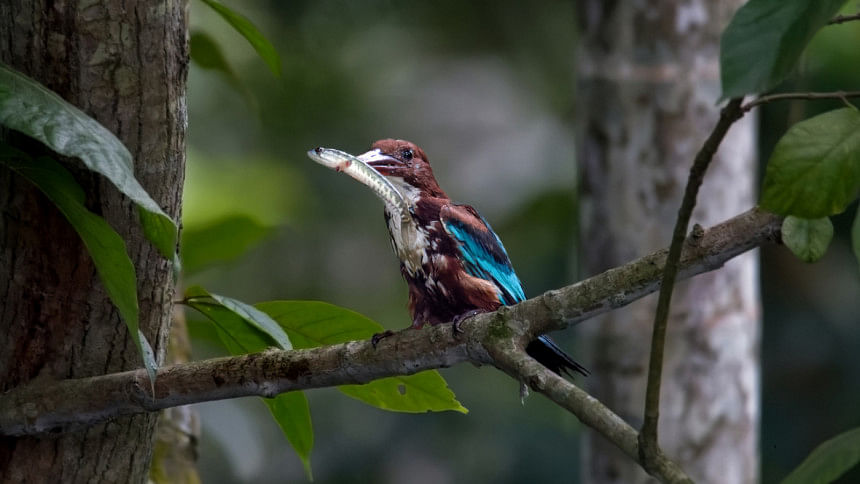The King of Fishers

After a successful plunge-dive for hunting, this White-throated Kingfisher was spotted with its meal at the National Botanical Garden in Dhaka. Widely distributed in Asia, this kingfisher is a resident over much of its range, though some populations may make short migrations.
It is one of the few wild species that saw success in adapting to urbanisation – as long as there is a tree around, it has a place to sleep. However, unlike other species of kingfishers, despite the name, these brids don't feed on fish alone and are classified as omnivores.

Anything it can spear with its razor-sharp bill may become food – large insects, lizards, crabs, earthworms and sometimes even small birds! And so, finding a habitat around water is not very necessary for them. In fact, their habitats can be in dry, deciduous forests, parks, gardens, wooded areas near open grass patches, while also near water bodies such as canals, rivers, or mangroves.
With few predators recorded and an expanding population, White-throated kingfishers are listed in the "Least Concern" category by the IUCN.

 For all latest news, follow The Daily Star's Google News channel.
For all latest news, follow The Daily Star's Google News channel. 



Comments